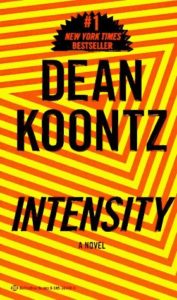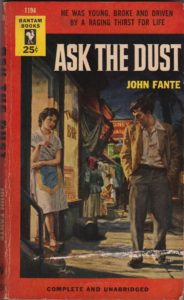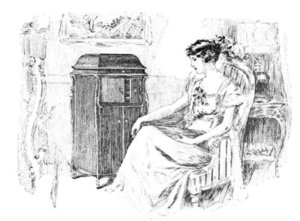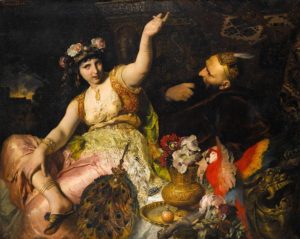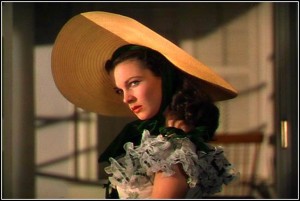by James Scott Bell
@jamesscottbell
 Check out this first page from a brave author:
Check out this first page from a brave author:
The house alarm is screaming out, not the early-warning beep but the piercing you’re-totally-screwed-if-you-don’t-move-now squeal. I don’t know how long it’s been going off, but it’s too late for me now. The searing oven-blast heat within the four corners of my bedroom. The putrid black smoke that singes my nostril hairs and pollutes my lungs. The orange flames rippling across the ceiling above me, dancing around my bed, almost in rhythm, a taunting staccato, popping and crackling, like it’s not a fire but a collection of flames working together; collectively, they want me to know, as they bob up and down and spit and cackle, as they slowly advance, This time it’s too late, Emmy—
The window. Still a chance to jump off the bed to the left and run for the window …
The author is Mr. James Patterson (along with his co-writer David Ellis). The novel is Invisible. Mr. Patterson is “brave” for choosing this opening gambit, for later on in the scene we learn the above is only a dream!
And that simply isn’t done.
At least you would think so if you’ve spent any significant amount of time around writers talking writing. Surely at least once a week, in some critique group somewhere, someone is uttering, as if citing stone tablets, that you must never begin a novel with a dream. Les Edgerton, in his book Hooked: Write Fiction That Grabs Readers at Page One (Writer’s Digest Books), is unequivocal:
Never, ever, ever begin a narrative with action and then reveal the character’s merely dreaming it all. Not unless you’d like your manuscript hurled across the room, accompanied by a series of curses. Followed by the insertion of a form rejection letter into your SASE and delivered by the minions of our illustrious postal service.
Les brings up a practical matter. If you’re submitting to an editor (remember the old days of the SASE?) and you pull the dream-opening thing, it’s almost certain he or she will consider your manuscript amateur hour.
But what do readers think?
The aforementioned Mr. Patterson, it may be safely said, is unequaled in his ability to gauge the pulse of the reading public. He has at least one other novel, Maximum Ride, that opens with a dream. (And last time I checked, Mr. Patterson’s manuscripts are not being returned.)
So what’s the actual deal on opening with a dream?
I don’t like it. There! That settles it.
Okay, just my opinion, folks. But it always feels like a cheat to me to get me caught up in the action, only to have the character wake up.
In all fairness, however, I’m hyper aware of craft. Most readers are not.
Maybe they don’t care in the slightest.
Let me make a subtle yet critical distinction here. One of the most famous openings in literature is Rebecca by Daphne du Maurier. It begins:
Last night I dreamt I went to Manderley again. It seemed to me I stood by the iron gate leading to the drive, and for a while I could not enter, for the way was barred to me. There was a padlock and a chain upon the gate. I called in my dream to the lodge-keeper, and had no answer, and peering closer through the rusted spokes of the gate I saw that the lodge was uninhabited.
Here we have the first-person narrator telling us about a dream. That’s not the same as the “dream fake-out”—beginning with intense action that turns out not to be real.
Practically speaking, then, if you’re a writer seeking a traditional book contract, I would counsel you not begin with a dream, for the reason Edgerton suggests. Most editors won’t go for it.
If you’re self-publishing, you have the choice.
I’d still advise against it.
Here is my further thought on dreams in fiction: Unless dreams are an integral part of the plot (e.g., a character has recurring, prophetic dreams), I would suggest limiting yourself to using a dream only once, if at all.
For what purpose? To show the emotional state of the character at some intense point in the book. Or to reveal backstory that is affecting the character’s psyche. I would also make sure the reader knows up front it’s a dream, as in the beginning of Chapter 15 of The City by Dean Koontz:
Eventually I returned to the sofa, too exhausted to stand an entire night watch. I dropped into a deep well of sleep and floated there until, after a while, the dream began in a pitch-black place with the sound of rushing water all around, as if I must be aboard a boat on a river in the rain …
Another option is to eschew a dream sequence altogether, and simply have the character describe the dream and how it is relevant. Thomas Harris does that in the aptly titled The Silence of the Lambs. Clarice Starling is a young FBI trainee tasked with extracting clues from the notorious killer and creative chef, Hannibal Lecter. Lecter trades her clues for intimate details about her life. At one point Clarice tells Lecter about the haunting memory of being at her uncle’s ranch, when she was ten, and hearing the screaming lambs being led to slaughter. And how she still dreams about it.
Lecter tells her that’s why she’s obsessed with catching Buffalo Bill. She thinks it will stop the lambs from screaming. It leads to the moving last line of the book:
But the face on the pillow, rosy in the firelight, is certainly that of Clarice Starling, and she sleeps deeply, sweetly, in the silence of the lambs.
To summarize my take:
- Don’t open with a dream fake-out.
- Use dreams sparingly (like, once) unless it’s an integral plot element.
- Let the reader know up front it’s a dream.
- Consider characters talking about a dream rather than giving it to us as a scene. Just make sure the dialogue has conflict or tension. (For example, the character doesn’t want to talk about the dream, but the other character drags it out of her, as in The Silence of the Lambs.)
Now it’s your turn, O Writer and (especially) O Reader. What do you think about dreams in fiction?


